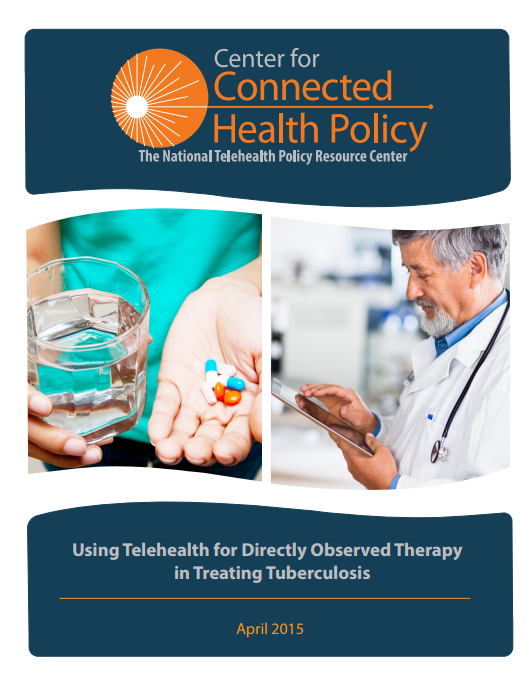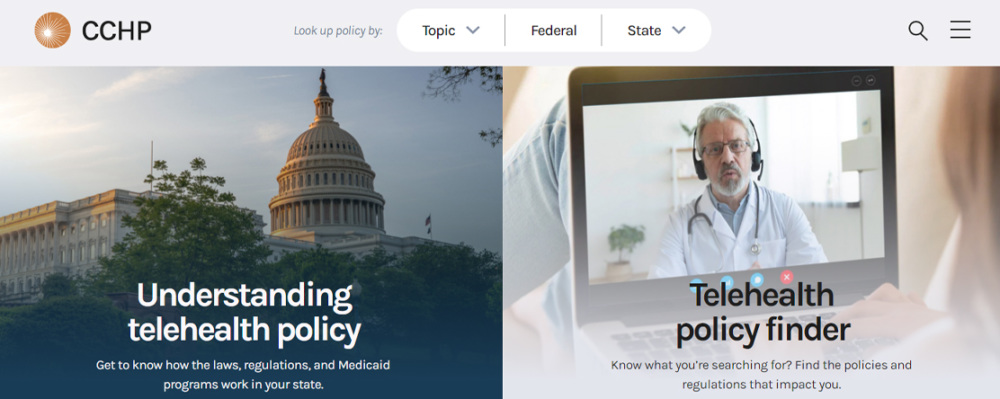
Using Telehealth for Directly Observed Therapy in Treating Tuberculosis
-
Focus Areas
Healthy Communities -
Issues
Technology & Telehealth -
Programs
Center for Connected Health Policy

 Tuberculosis (TB) is one of the most widespread infectious diseases in the world, infecting an average of 9 million people annually.[i] Although TB is curable, more than 1 million TB-related deaths occur each year globally.[ii] California reported the largest number of cases in the United States (U.S.), representing 22 percent of the nation’s 9,951 cases, and the third highest rate among states.[iii]
Tuberculosis (TB) is one of the most widespread infectious diseases in the world, infecting an average of 9 million people annually.[i] Although TB is curable, more than 1 million TB-related deaths occur each year globally.[ii] California reported the largest number of cases in the United States (U.S.), representing 22 percent of the nation’s 9,951 cases, and the third highest rate among states.[iii]
The Centers for Disease Control and Prevention (CDC) recommends the use of “directly observed therapy” (DOT) as the most effective way of administering medication in treating tuberculosis.[iv] DOT consists of observing TB patients taking their TB medication to assure adherence to a course of treatment. Strict adherence to ingesting the medication is necessary because patients who take their medications inconsistently or stop early are at risk for disease progression and death, transmission of the disease to others, and development of drug resistant strains of the TB bacteria that are much more difficult and expensive to treat.
While effective in treating TB, DOT is labor intensive, and an expensive treatment approach that taxes limited public health resources. Treatment of TB can range from three months for latent infections of TB[v] to twenty-four months for multi-drug resistant TB (MDR-TB)[vi] and the cost of treating one patient can range from $2,000 to $250,000 for just the medication.[vii]
The purpose of this paper is to explore the potential use of telehealth as an effective way to address the logistical and financial challenges faced by public health departments in utilizing DOT, while still effectively treating TB patients. Telehealth is the use of technology to deliver care from a distance. Two telehealth modalities, live video DOT (LV-DOT) and asynchronous video DOT (AV-DOT), have demonstrated early promise in several small pilots that it can be effectively utilized to deliver DOT. Telehealth could reduce travel time and costs for both the public health department and the patient, create more flexibility in scheduling, provide a safer environment for the health care worker by limiting their travel and exposure to TB, and quite possibly increase the likelihood of adherence due to these benefits.
Citations
[i] Congressional Research Service, “US Response to the Global Threat of Tuberculosis: Basic Facts”, Washington, DC, Government Printing Office, June 15, 2012, p. 1.
[ii] Ibid.
[iii] California Department of Public Health, “Report on tuberculosis in California, 2013”, Sacramento, CA, August 2014, p. 2.
[iv] Centers for Disease Control and Prevention. (2012). “Module 9: Patient Adherence to Tuberculosis Treatment Reading Material,” (Accessed March 26, 2015).
[v] Centers for Disease Control, Tuberculosis Webpage, (Accessed February 27, 2015).
[vi] National Institute of Allergy and Infectious Diseases, Tuberculosis Webpage, (Accessed February. 27, 2015)
[vii] World Health Organization, Tuberculosis Webpage, (Accessed February 27, 2015).
Originally published by Center for Connected Health Policy
Work With Us
You change the world. We do the rest. Explore fiscal sponsorship at PHI.
Support Us
Together, we can accelerate our response to public health’s most critical issues.
Find Employment
Begin your career at the Public Health Institute.


